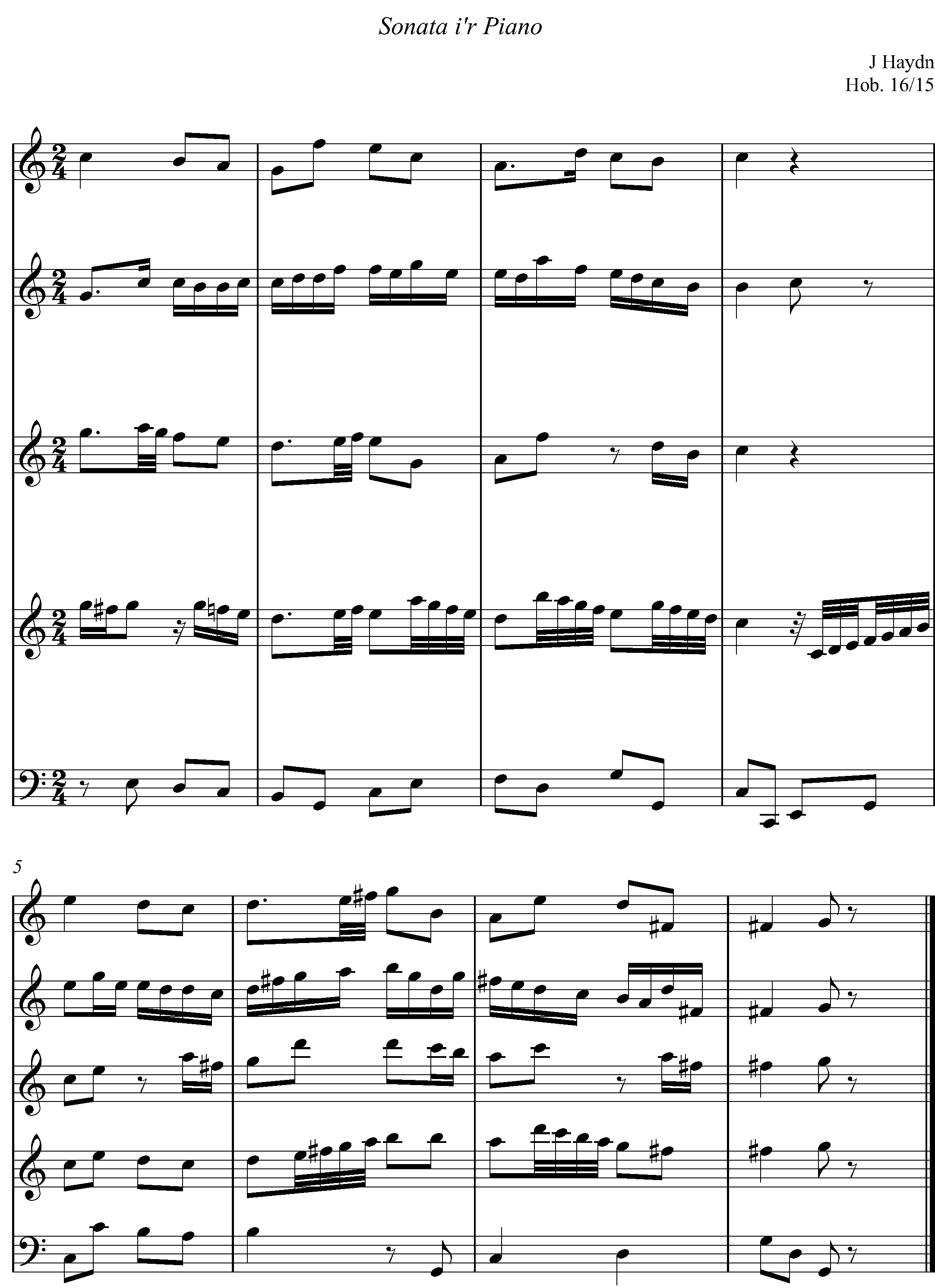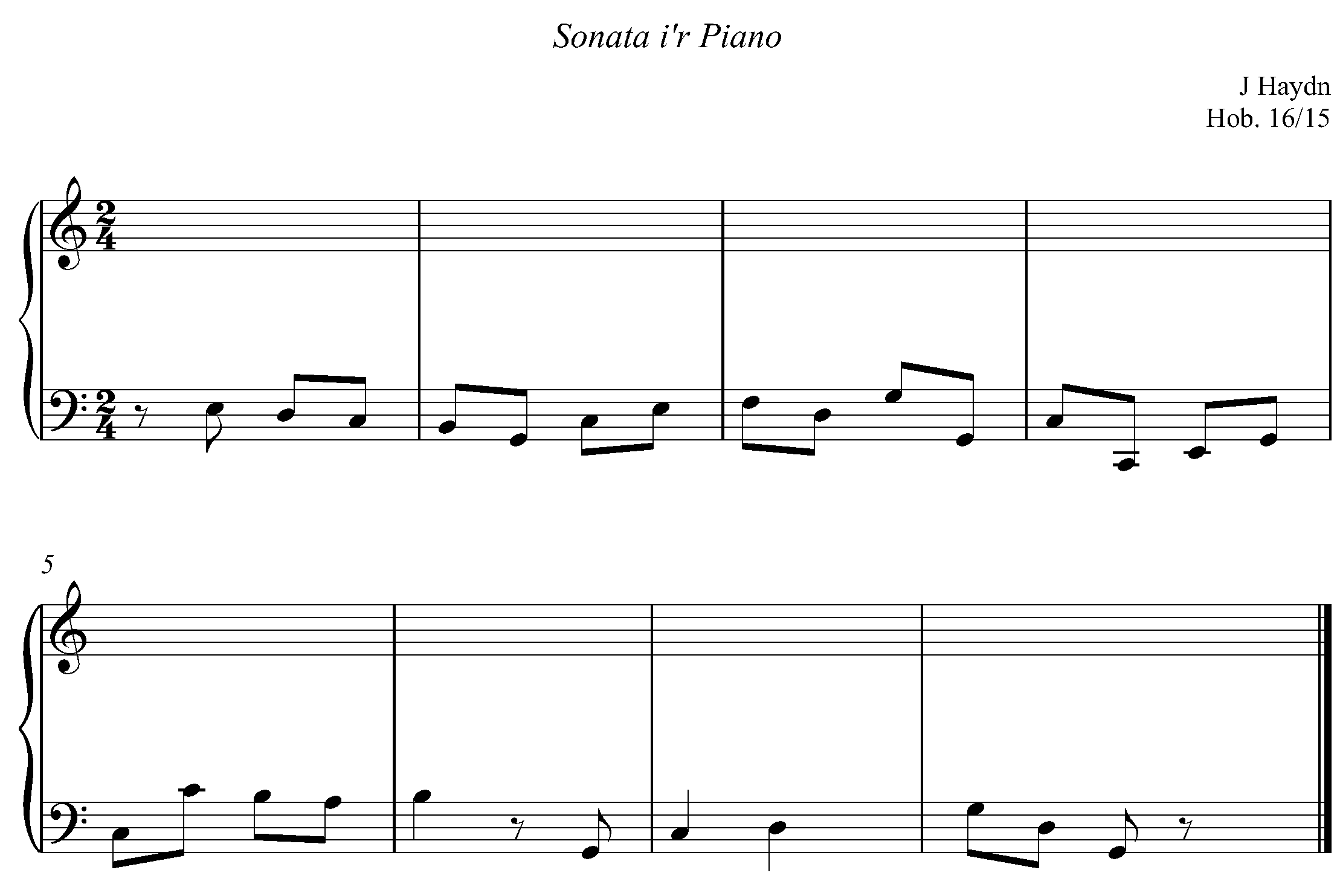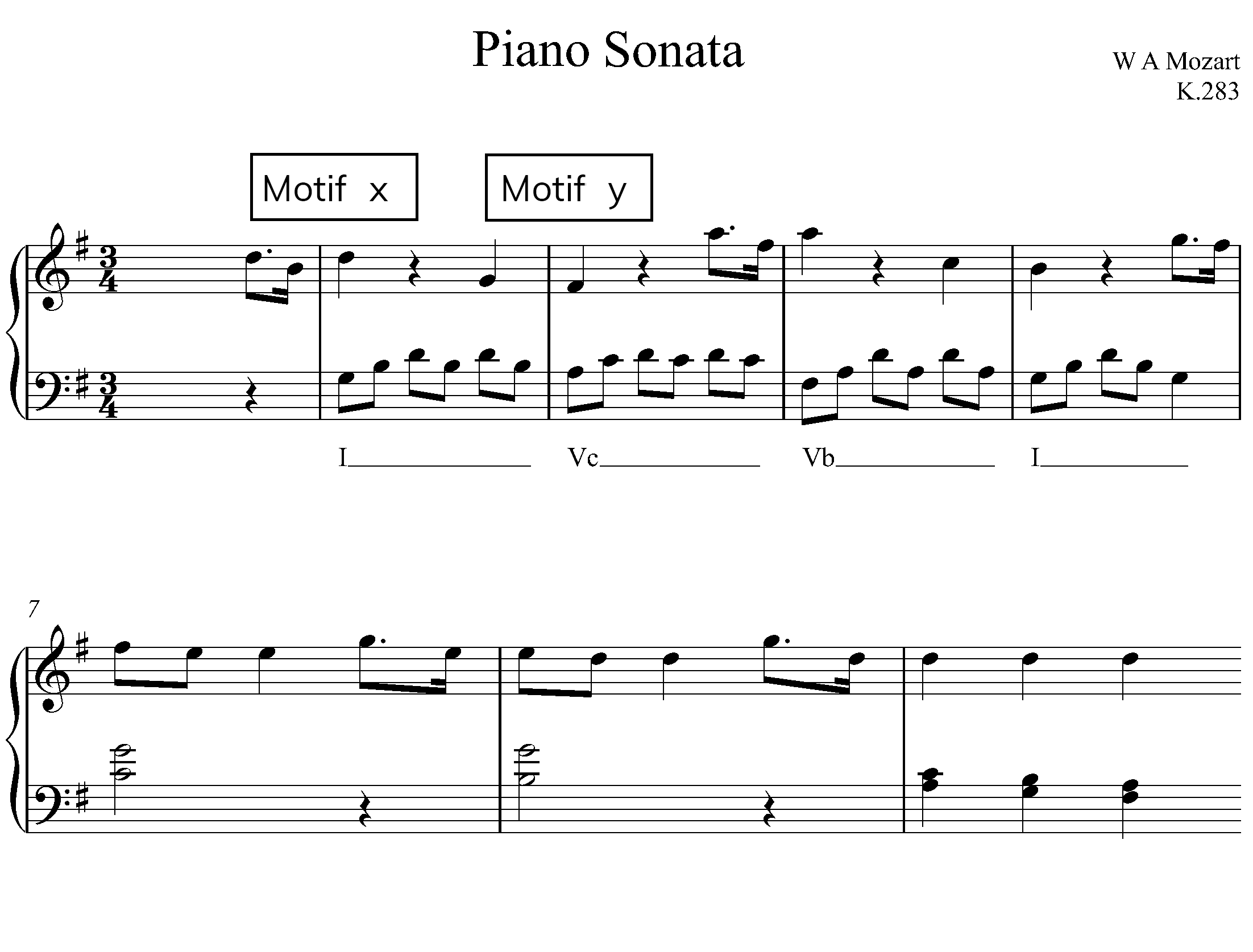Several composers have created entire movements using a technique known as theme and variation. In the Piano Sonata in C (Hob.16/15), Haydn uses a theme and variation as the last movement of the piece. The same bass line is used to accompany the melody and the first 3 variations. Listen to the melody and each variation in turn against the bass line.
Fig. 8

Here is just the bass line. Compose a line for the treble part. Remember to start using F# from about bar 5 onwards, as Haydn does, because the key modulates to G major by bar 8. You should consider the chords that are outlined by the bass line so that the melody fits in with them.
Fig. 9

Considering rhythm:
- Classical composers formulate balanced melodies through effective use of rhythm.
- Look at the opening of Mozart’s Sonata above focussing on his use of rhythm (figure 9).
- The opening rhythm uses two motifs: x and y.
- The accompaniment (the bass part/left hand) starts with Alberti quavers and change to two minims as the right hand melody develops rhythms x and y.
- Look again at the examples above analysing the rhythm in particular.
Consider whether the rhythms in your composition form a clear pattern and effective balance.
Compose a new melody based on the rhythm of Mozart’s melody.
Fig. 10
